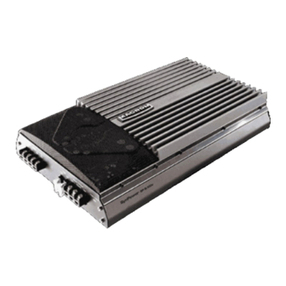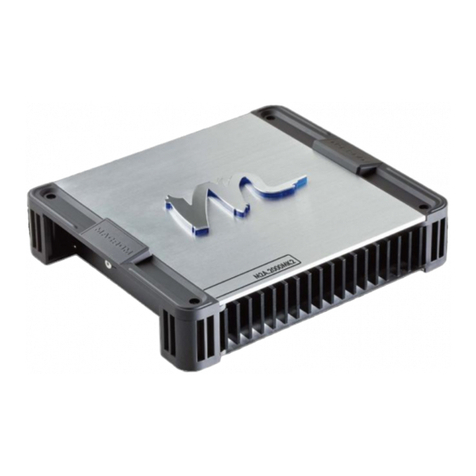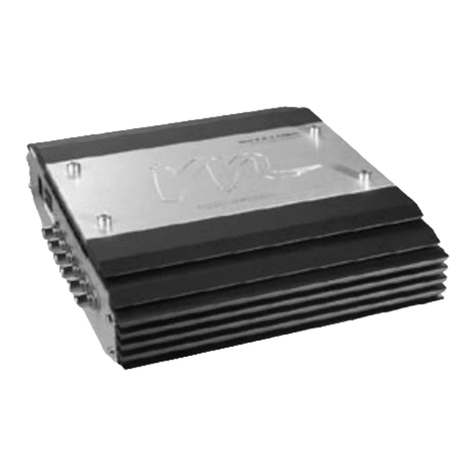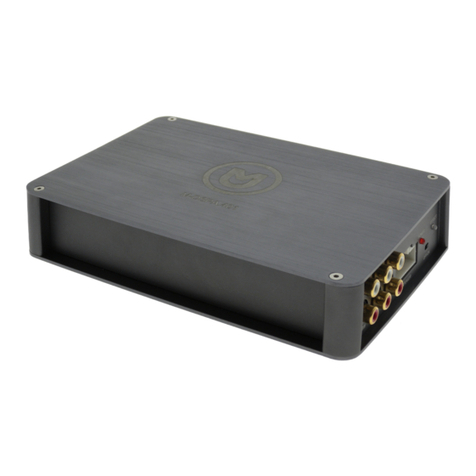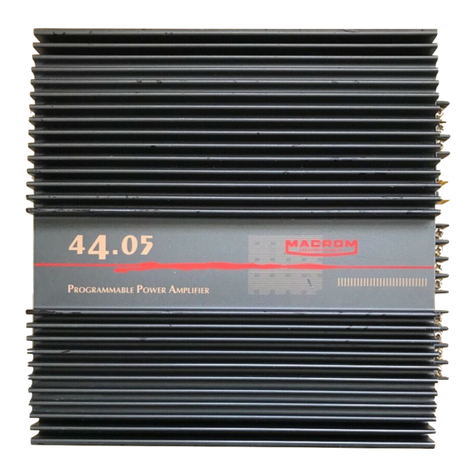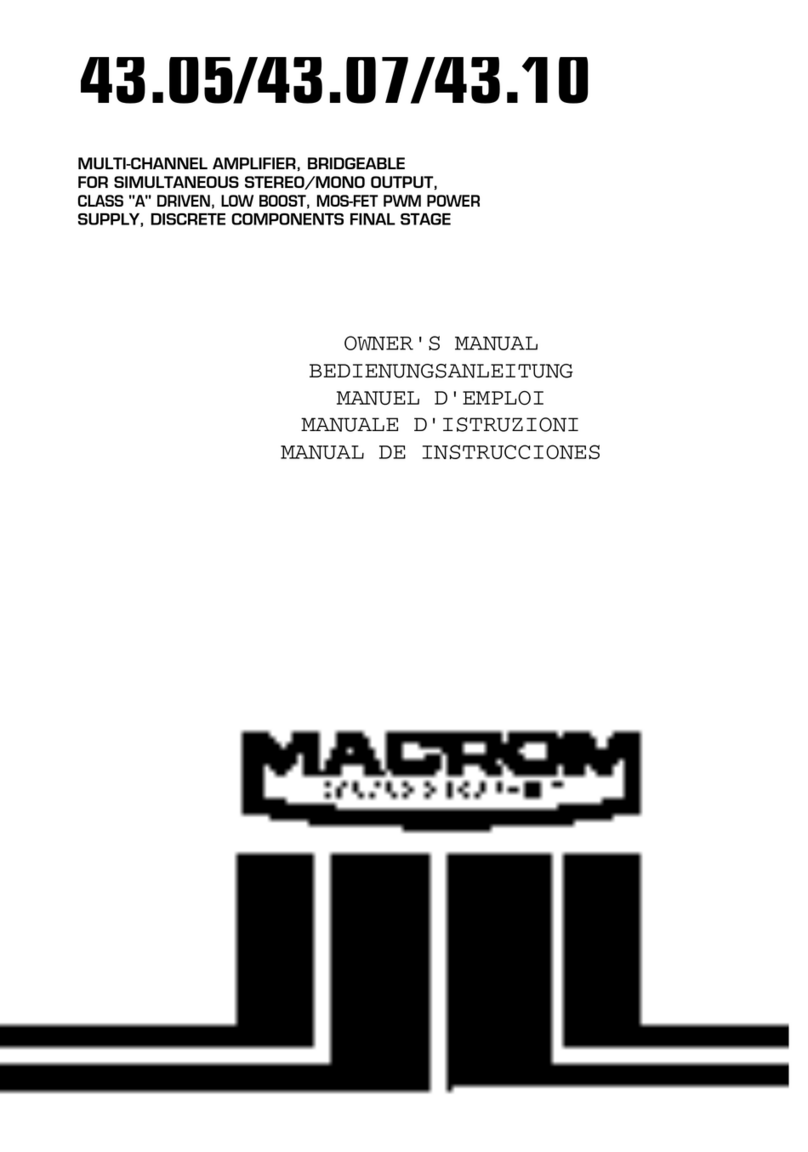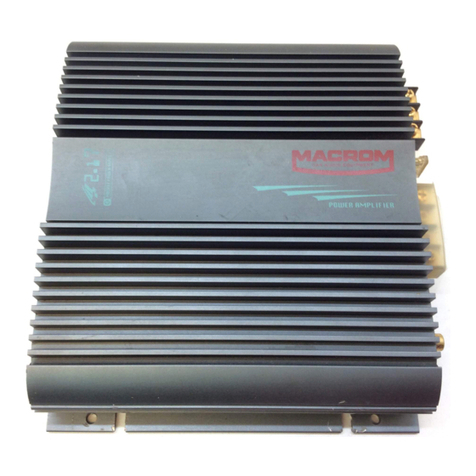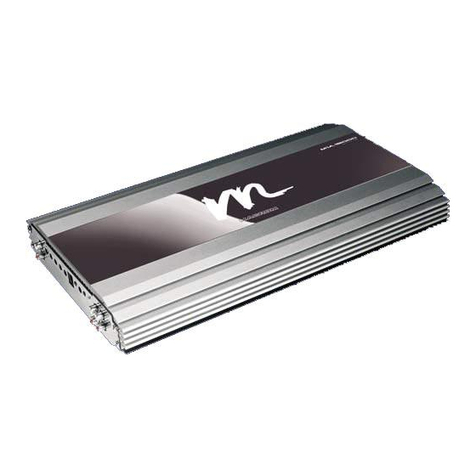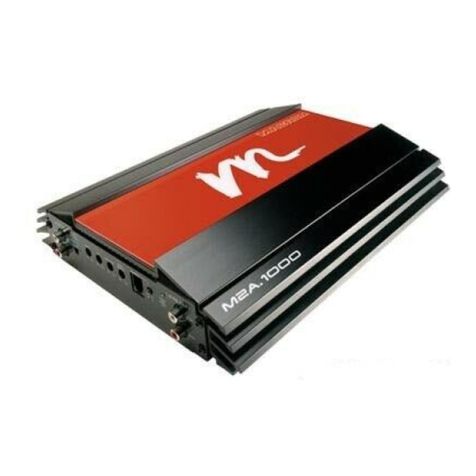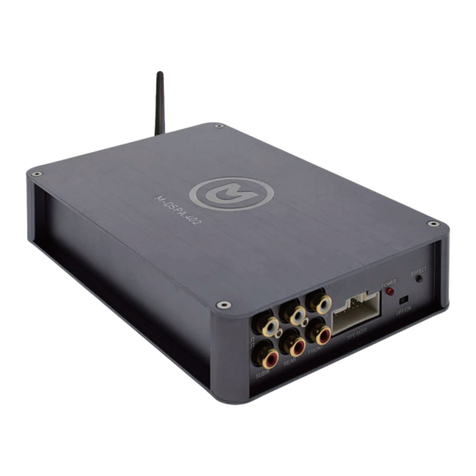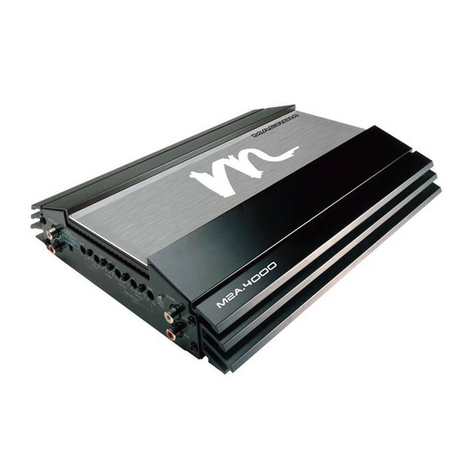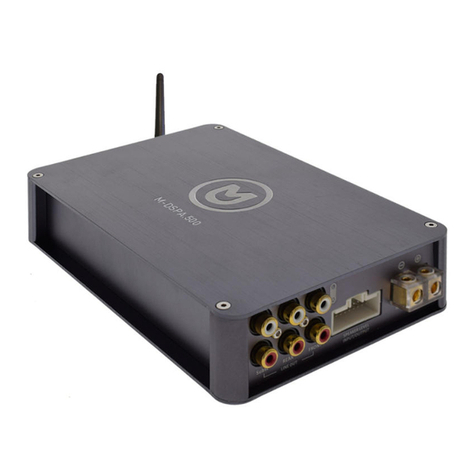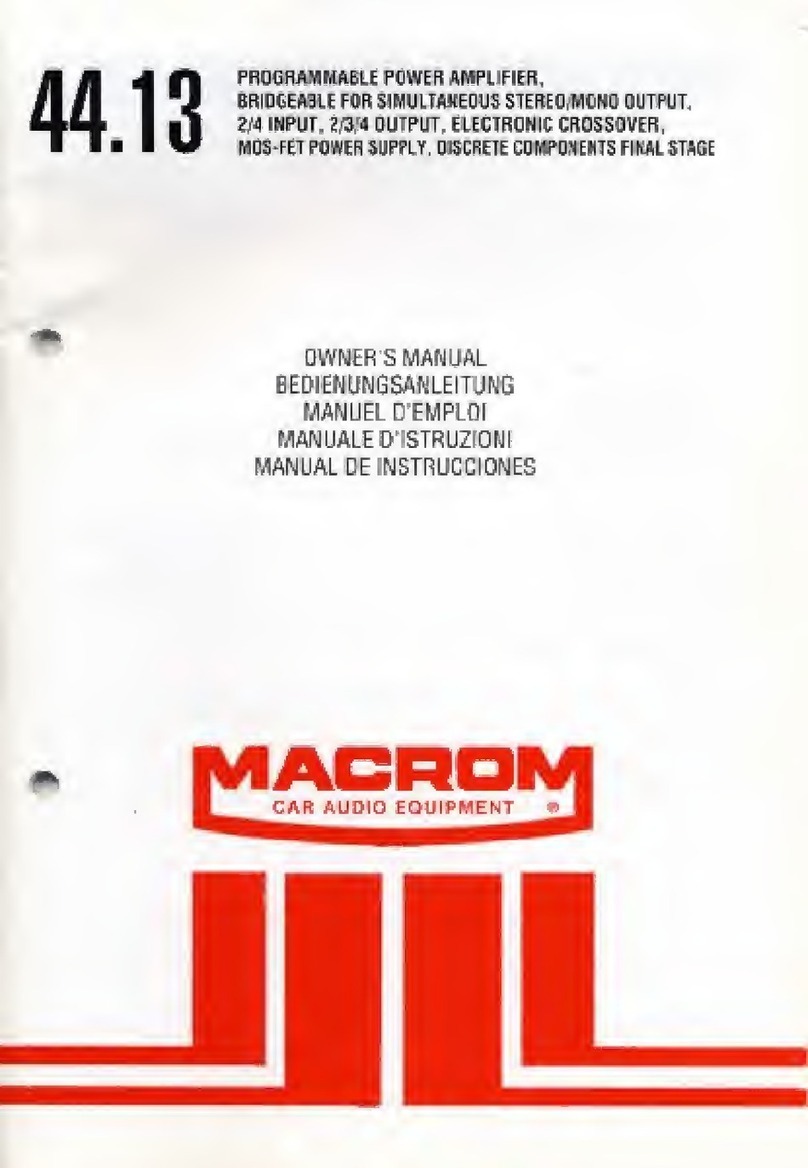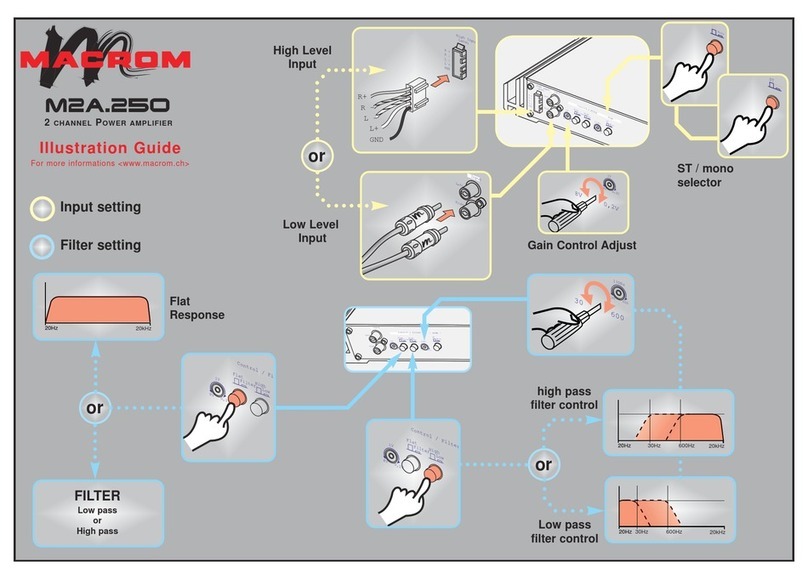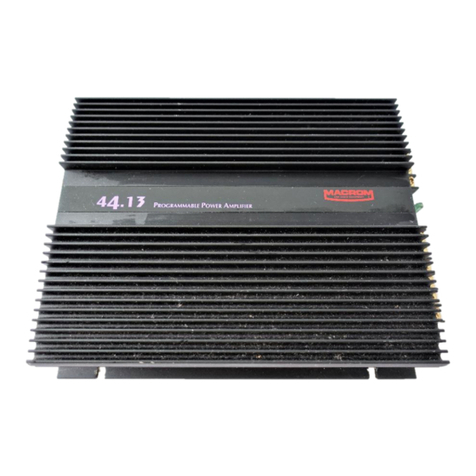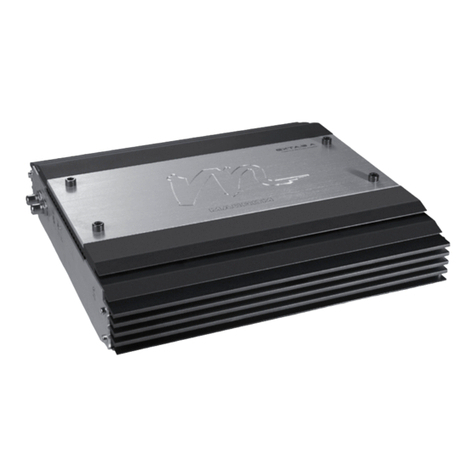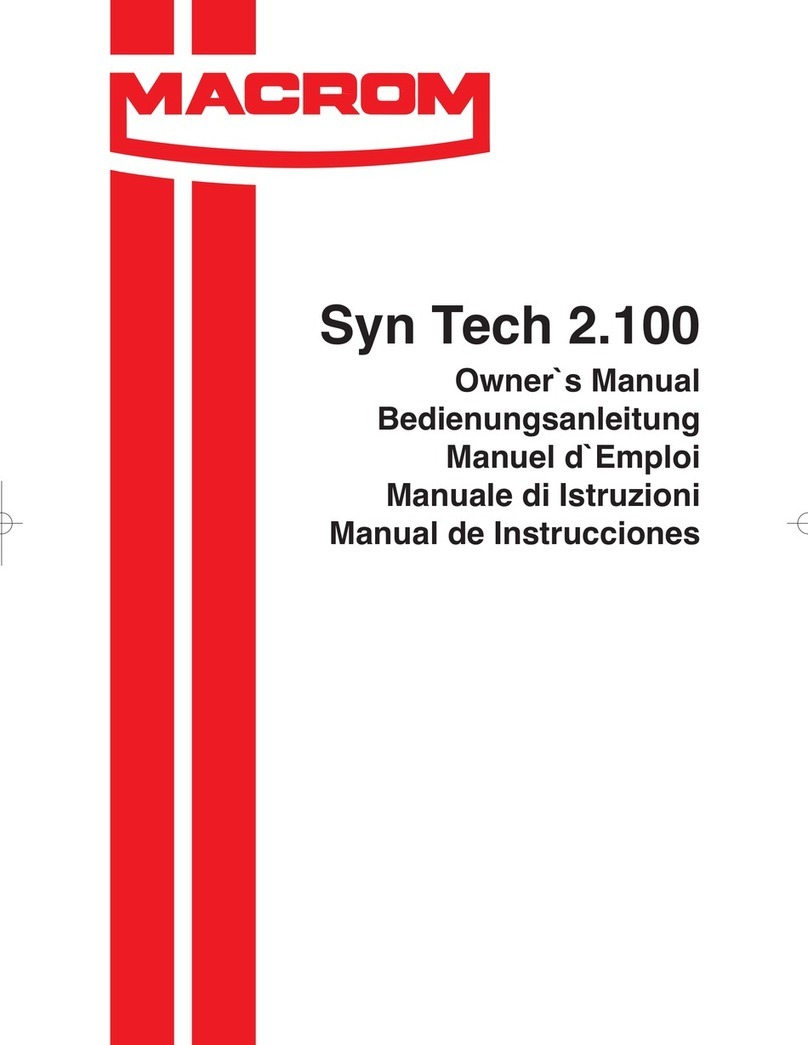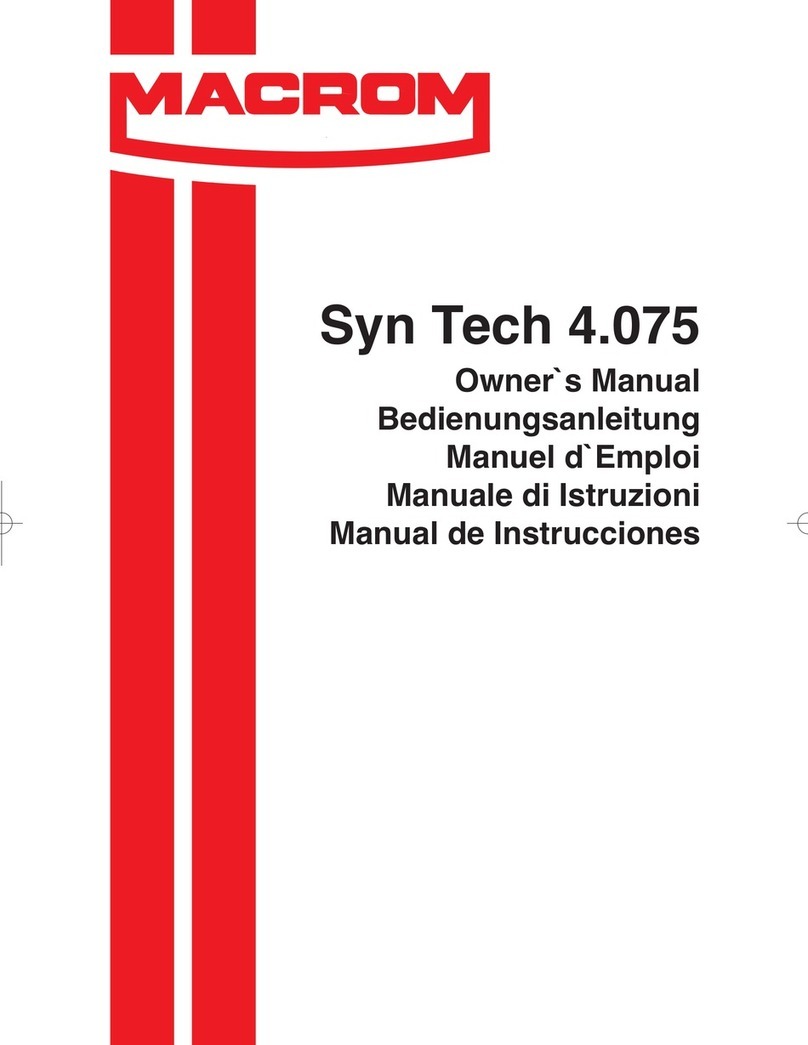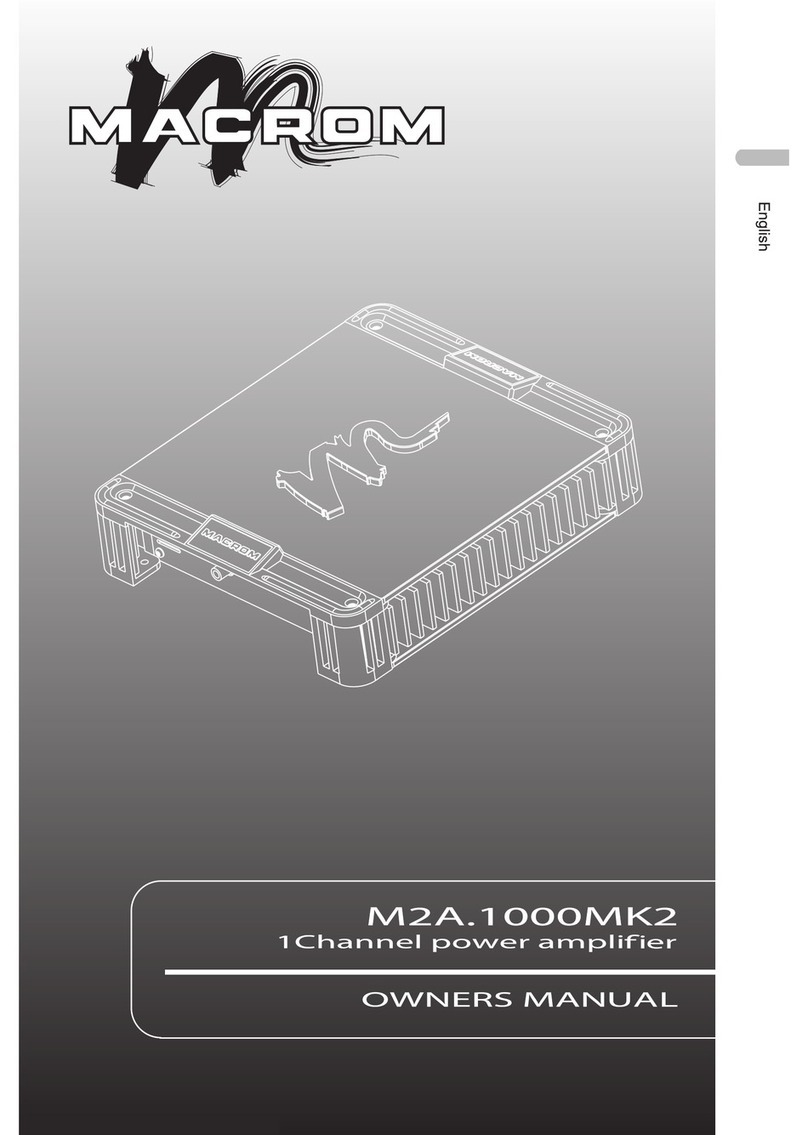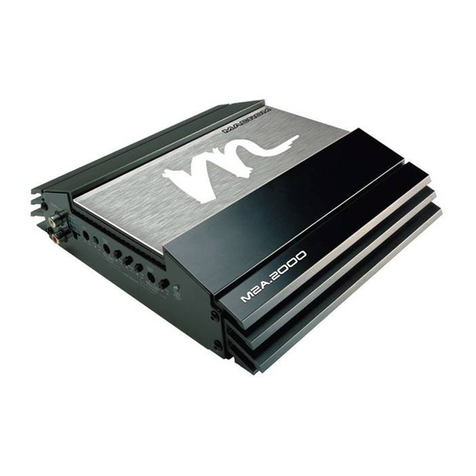
5
EINFÜHRUNG
Der Name MACROM ist seit jeher Synonym von Tradition, einer europäischen Tradition von
Sound und Musik, die die beste Tonqualität zum höchsten ZIel gesetzt hat. Die Tatsache, daß
Sie sich für dieses Produkt entschieden haben, beweist, daß auch Sie so denken. Diese
Bedienungsanleitung wird Ihnen dabei helfen, die vielen Eigenschaften dieser neuen Mono
Endstufe 44.50 zu entdecken und vorteilhaft einzusetzen.
Diese Endstufe schließt eine ganze Reihe von besonderen technischen Eigenschaften und
Leistungsmerkmalen ein; aus diesem Grund ist es besonders wichtig, daß alle Signalquellen,
Lautsprecher und Anschlußgeräte von höchster Qualität sind. Wir empfehlen die Verwendung
eines Hauptgeräts, einer Leistungs-Endstufe, von Lautsprechersystemen, Verbindungskabeln
und Zubehör von MACROM, die den höchsten Qualitätsanforderungen entsprechen, denn die
Verbindung dieser Geräte ist äußerst komplex. Aus diesem Grund raten wir, die Endstufe
44.50 von Ihrem MACROM-Vertragshändler installieren zu lassen.
Diese Endstufe von MACROM hat keine Einstellungen und Regelungen, die vom Anwender
benutzt werden können. Lesen Sie diese Bedienungsanleitung sehr sorgfältig, um sich mit
den besonderen Eigenschaften und Funktionen Ihrer neuen Endstufe 44.50 von MACROM
vertraut zu machen. Wenden Sie sich im Zweifelsfalle vertrauensvoll an Ihren MACROM-
Vertragshändler.
VORSICHTSMAßNAHMEN
1. Jegliche falsche Verbindung könnte das Gerät beschädigen. Lesen Sie aufmerksam die
Anleitungen für den Kabelanschluß durch.
2. Das Batteriekabel zuletzt an den Pluspol (+) der Batterie anschließen und nur, nachdem
alle anderen Anschlüsse ausgeführt worden sind.
3. Man vergewissere sich, daß die elektronische Frequenzweiche an einer Stelle installiert
wird, wo gute Luftzirkulation und eine gute Wärmeabgabe gewährleistet sind.
4. Die Sicherungen müssen immer durch Sicherungen mit der gleichen Amperezahl ersetzt
werden, um schwere Beschädigungen der Gerätekomponenten zu vermeiden. Man lasse
bei mehrmaligem Durchbrennen der Sicherungen die Lichtmaschine des Wagens
überprüfen. Das Gerät niemals selber reparieren, sondern jegliche Reparatur Ihrem
MACROM-Vertragshändler oder der nächsten MACROM-Dienststelle übergeben.
5. Um die besten Leistungen zu erzielen sollte die Temperatur im Wageninnenraum zwischen
-10° C und +60° C liegen, bevor man das Gerät einschaltet.
EIne gute Lüftung des Wageninnenraums ist erforderlich, um die Überhitzung der inneren
Stromkreise des Gerätes zu vermeiden.
EIGENSCHAFTEN
•4/2-KANAL-EINGANGSMODUSWAHLSCHALTER
•4/3/2-KANAL-AUSGANGSMODUSWAHLSCHALTER
•FRONT-FLAT-, LOW-PASS- ODER HIGH-PASS-WAHLSCHALTER
•REAR-FLAT-, LOW-PASS- ODER HIGH-PASS-FILTER-WAHLSCHALTER
•STUFENLOSE FREQUENZREGELUNG
•STUFENLOSE EMPFINDLICHKEITSREGELUNG
•MOS-FET-SPEISUNG
•“CHECK-CONTROL”-ANZEIGE
•REMOTE-EIN- UND -AUSSCHALTUNG
• VERGOLDETE RCA-EINGANGSANSCHLÜSSE
•VERGOLDETE, PROFESSIONELLE SCHRAUBANSCHLÜSSE
O/M 44.50 26/06/02 9:48 Page 5

